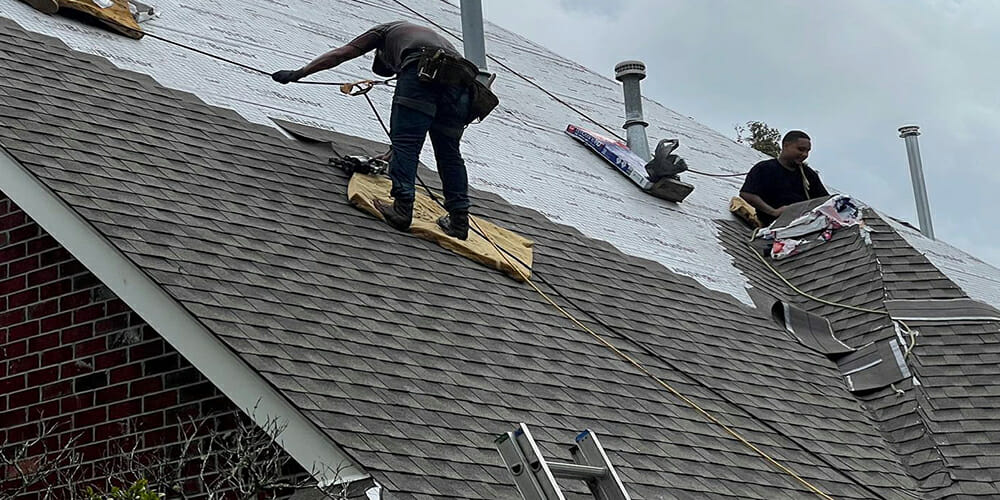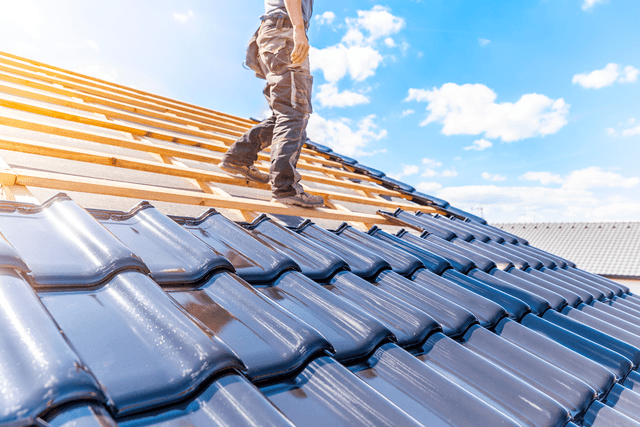What Factors Influence the Price of Your Roofing Replacement and How to Estimate Them
Understanding the expense of roofing substitute involves a complex strategy that accounts for numerous affecting variables. Labor prices and geographic factors to consider can significantly change your budget.

Roof Product Choices
When considering a roofing system replacement, the choice of roof covering materials plays an important function in both the aesthetic appeal and durability of your home. Picking the ideal material can dramatically influence the overall price of your task, as different choices vary in maintenance, cost, and resilience demands.
Asphalt tiles remain one of one of the most popular choices due to their cost and convenience of setup. They generally last 15 to 30 years and can be found in a selection of shades and designs, enabling home owners to match their wanted visual. Conversely, metal roofing provides superior sturdiness and can last 40 to 70 years, making it an attractive long-term financial investment. Nonetheless, the preliminary cost is greater contrasted to asphalt.
For a much more traditional look, timber drinks offer all-natural elegance but require routine maintenance to stop rot and bug damage. Slate and tile roof, while incredibly sturdy and stunning, are among one of the most costly options and usually require customized setup. Ultimately, the choice of roofing product ought to line up with your budget plan, climate considerations, and individual design choices, as each product offers distinct advantages and disadvantages that can influence the overall expense of your roofing system replacement.

Roof Covering Size and Intricacy
Thinking about the details of roofing system dimension and intricacy is vital for accurately estimating the cost of a roofing system substitute. The total location of the roofing system directly influences material and labor costs; bigger roofings normally require more materials and might necessitate additional labor force to complete the job effectively. A specific measurement of roof measurements, consisting of the pitch and incline, is important, as steeper roofs frequently need specific safety and security equipment and strategies, even more raising costs.
Intricacy also plays a significant role in figuring out costs. Roofings with numerous elements, such as valleys, gables, and dormers, involve more elaborate styles and cuts, requiring greater ability degrees and extra labor. Furthermore, roofing systems with unconventional forms might need tailored materials or setup methods, which can escalate prices.
Additionally, the existing roofing system condition can influence both dimension and complexity. These variables will certainly add to the overall cost if architectural repairs or support are needed. Ultimately, an accurate analysis of roofing system size and complexity not just helps in estimating prices yet likewise ensures that home owners make notified decisions when planning their roof covering substitute projects.
Labor Costs and Schedule
Labor expenses and availability are essential consider the general expense of roof covering substitute projects. Roof Replacement Estimate. Proficient labor is vital for guaranteeing the top quality and longevity of the setup, and the rates for such labor can differ considerably based on experience and expertise. Service providers may bill different per hour prices depending upon their credentials, and these rates can include up rapidly, affecting the total price of the project
In addition, the accessibility of experienced labor can influence timelines and pricing. In areas where roofer remain in high demand, labor expenses might enhance as a result of competition for minimal workers. Alternatively, in areas with an excess of labor, service providers may use extra competitive prices to safeguard work, potentially reducing total substitute expenses.
It is additionally vital to think about the period of the task, as longer timelines can lead to boosted labor expenditures. Any hold-ups caused by climate condition or supply chain concerns can further pump up prices. Property owners should conduct extensive study and get numerous quotes to guarantee they know the market rates and labor availability in their area, permitting more accurate budgeting for their roofing system replacement.
Geographic Place Effect
Geographical place plays a considerable function in figuring out the straight from the source expense of roofing substitute. Different elements, including local climate, product schedule, and labor expenses, are affected by where you live. In regions susceptible to extreme weather, such as hefty snowfall or cyclones, house owners might need specialized roofing products and strategies, which can boost general expenses. Roofings in areas with high winds may require to be built using extra long lasting materials, elevating expenses.
In addition, worldly availability can vary significantly by location. Areas with a robust supply chain might provide reduced material prices because of competitors among suppliers, while remote locations may encounter greater prices as a result of transportation expenses. Labor rates likewise vary extensively; metropolitan locations normally have higher labor expenses as a result of demand, whereas country locations might offer more economical alternatives.

Extra Attributes and Upgrades
When planning a roofing system substitute, several property owners may discover that including added attributes and upgrades can significantly boost the total value and functionality of their home. Functions such as skylights, solar panels, and enhanced ventilation systems not only contribute to aesthetic allure yet additionally offer practical advantages like energy performance and natural lights.
Skylights can lighten up indoor spaces, reducing dependence on artificial illumination, while solar panels can lower power expenses and enhance sustainability. Additionally, purchasing a high-quality air flow system can extend the lifespan of the roof covering by protecting against wetness buildup, which can bring about expensive repair work.
Upgraded roof materials additionally play a vital role in the total expense. Alternatives such as metal, slate, or building roof shingles may have greater initial expenses but usually offer better toughness and longer warranties. In addition, including seamless gutter guards or improved drainage systems can stop water damage and minimize upkeep efforts with time.
Eventually, while these added features and upgrades may boost the ahead of time cost of a roofing replacement, they typically cause long-term cost savings, enhanced power efficiency, and improved residential or commercial property value, making them beneficial factors to consider for homeowners.
Final Thought
To conclude, the price of roof replacement is influenced by a range of variables, consisting of the choice of roofing materials, the size and complexity of the roofing, labor prices, and geographical area. Additional features and upgrades even more affect the general budget plan. Recognizing these variables is crucial for accurate cost estimation and effective project planning, ultimately guaranteeing that property owners are well-prepared for linked here the monetary ramifications related to roofing substitute.
Thinking about the ins and outs of roof covering dimension and intricacy is essential for accurately estimating the cost of a roof substitute. The complete location of the roofing directly influences product and labor prices; larger roofs normally call for even more products and may require extra labor force to complete the work efficiently. Ultimately, a precise assessment of roof covering size and intricacy not just assists in estimating costs yet additionally makes sure that property owners make informed choices when preparing their roofing system substitute jobs.
Regions with a durable supply chain may offer reduced material prices due to competition amongst vendors, while remote areas might face greater costs due to transport expenses.In conclusion, the expense of roofing system substitute is influenced by a selection of aspects, including the option of roofing products, the size and complexity of the roof, labor expenses, and geographical place.